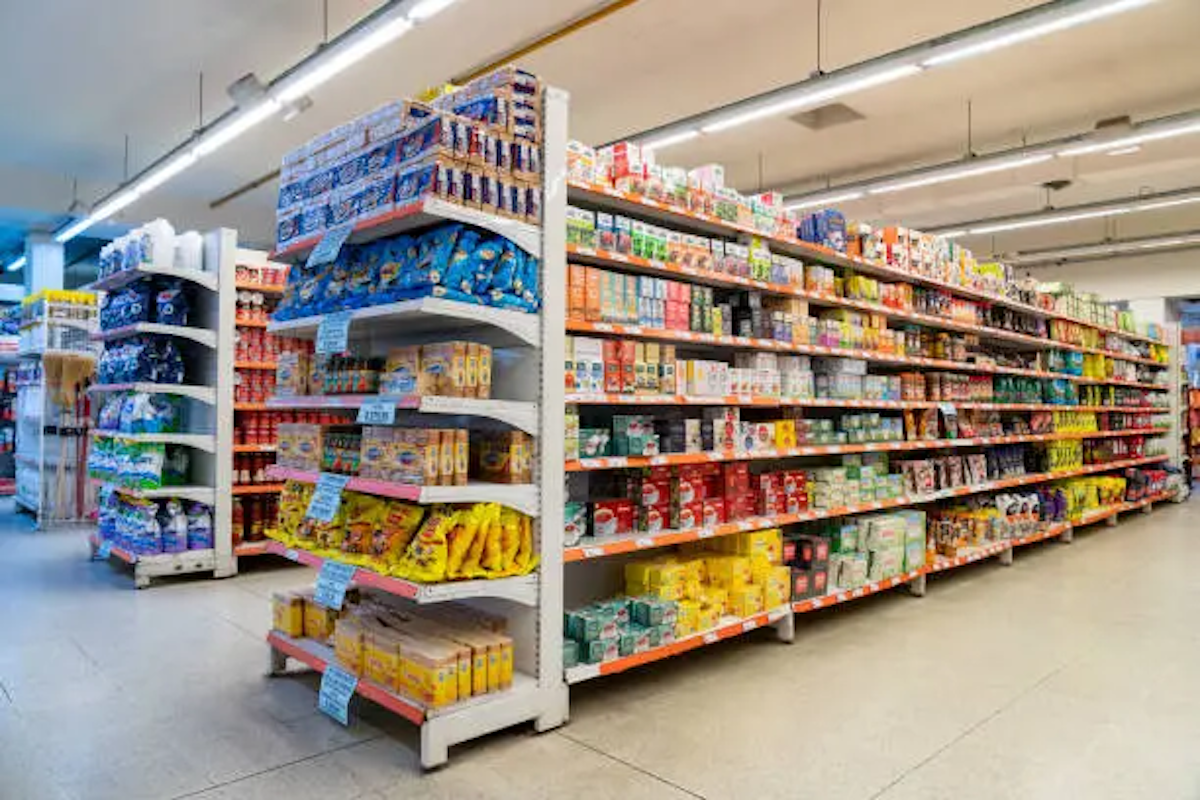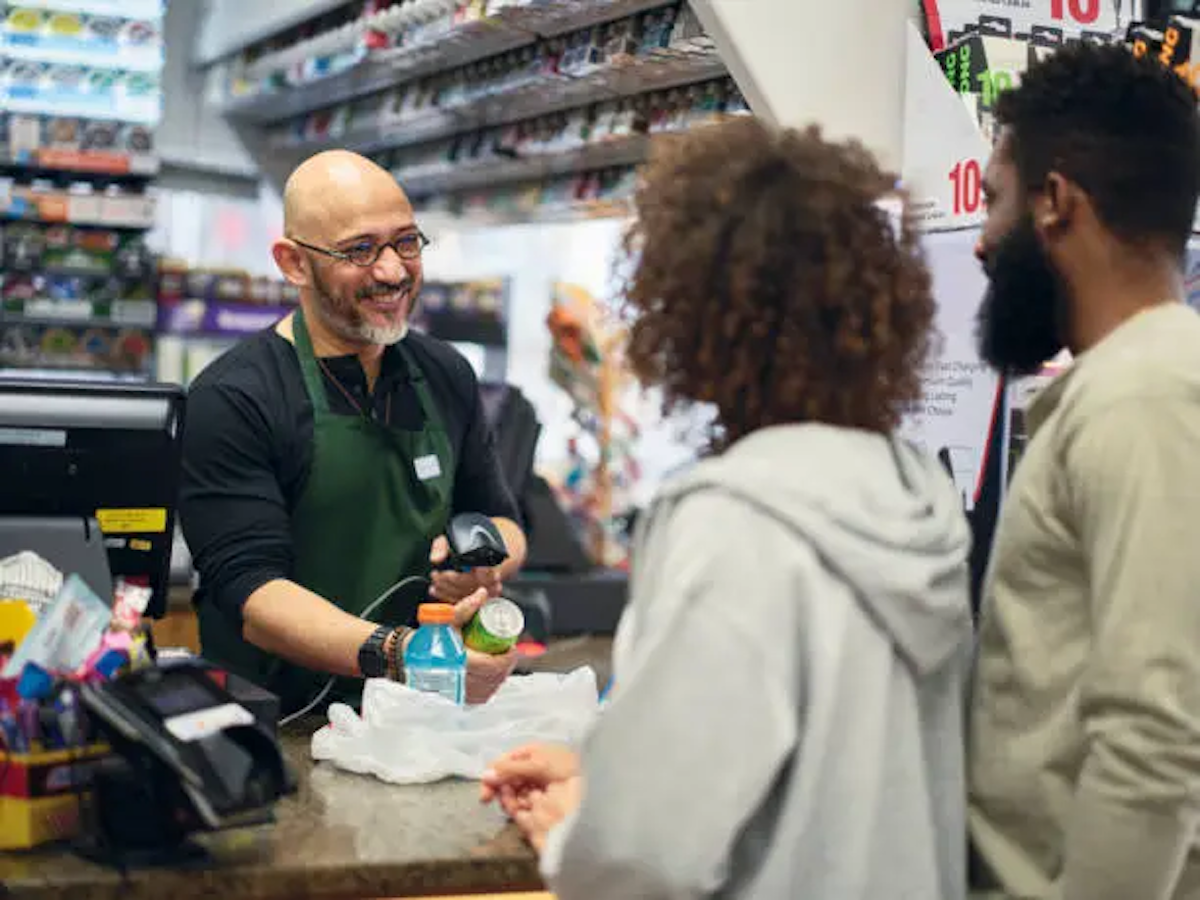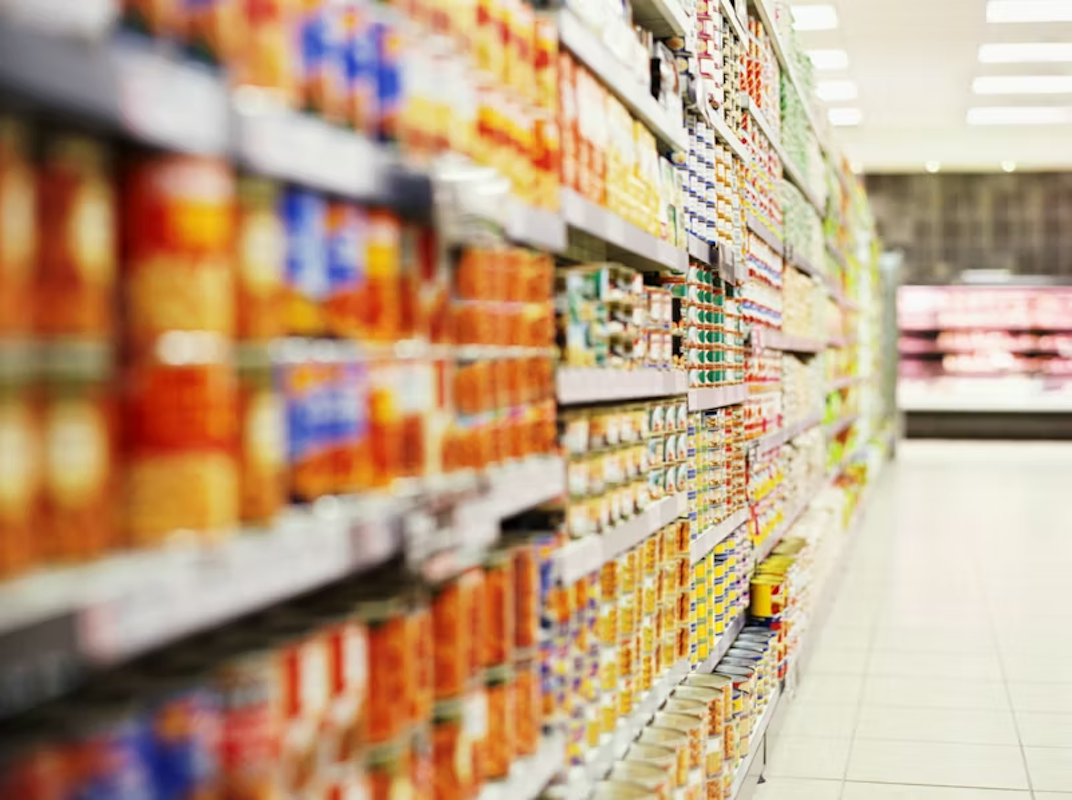13 min read
The 3 Convenience Store Industry Trends You Need to Know
Convenience stores are more than just gas stations or quick stops on a long road trip—they supply on-the-go customers with crucial daily essentials....
Platform
What is Paytronix Guest Engagement Suite?
Combining online ordering, loyalty, omnichannel messaging, AI insights, and payments in one suite. Paytronix delivers relevant, personal experiences, at scale, that help improve your entire digital marketing funnel by creating amazing frictionless experiences.
A Complete Guest Engagement Suite
Online Ordering
Acquire new customers and capture valuable data with industry leading customization features.
Loyalty
Encourage more visits and higher spend with personalized promotions based on individual activity and preferences.
Catering
Grow your revenue, streamline operations, and expand your audience with a suite of catering tools.
CRM
Build great customer relationships with relevant personal omnichannel campaigns delivered at scale.
Artificial Intelligence
Leverage the most data from the most customer transactions to power 1:1 marketing campaigns and drive revenue.
Payments
Drive brand engagement by providing fast, frictionless guest payments.
Solutions
Paytronix Guest Engagement Solutions
We use data, customer experience expertise, and technology to solve everyday restaurant and convenience store challenges.
FlightPaths are structured Paytronix software onboarding journeys designed to simplify implementation and deliver maximum ROI.
Customer Success Plans (CSPs) are tiered service offerings designed to help you get the most from your Paytronix software, whether you prefer self-guided support or hands-on partnership.
Contactless Experiences
Accommodate your guests' changing preferences by providing safe, efficient service whether dining-in or taking out.
Customer Insights
Collect guest data and analyze behaviors to develop powerful targeted campaigns that produce amazing results.
Marketing Automation
Create and test campaigns across channels and segments to drive loyalty, incremental visits, and additional revenue.
Mobile Experiences
Provide convenient access to your brand, menus and loyalty program to drive retention with a branded or custom app.
Subscriptions
Create a frictionless, fun way to reward your most loyal customers for frequent visits and purchases while normalizing revenues.
Employee Dining
Attract and retain your employees with dollar value or percentage-based incentives and tiered benefits.
Order Experience Builder
Create powerful interactive, and appealing online menus that attract and acquire new customers simply and easily.
Loyalty Programs
High-impact customizable programs that increase spend, visit, and engagement with your brand.
Online Ordering
Maximize first-party digital sales with an exceptional guest experience.
Integrations
Launch your programs with more than 450 existing integrations.
Loyalty Programs
Deliver the same care you do in person with all your digital engagements.
Online Ordering
Drive more first-party orders and make it easy for your crew.
Loyalty Programs
Digital transformations start here - get to know your guests.
Online Ordering
Add a whole new sales channel to grow your business - digital ordering is in your future.
Integrations
We work with your environment - check it out
Tobacco Reporting
Comply with AGDC 2026 DTP Requirements
Company
We are here to help clients build their businesses by delivering amazing experiences for their guests.
Meet The Team
Our exceptional customer engagement innovations are delivered by a team of extraordinary people.
News/Press
A collection of press and media about our innovations, customers, and people.
Events
A schedule of upcoming tradeshows, conferences, and events that we will participate in.
Careers
Support
Paytronix Login
Order & Delivery Login
Resources
Paytronix Resources
Learn how to create great customer experiences with our free eBooks, webinars, articles, case studies, and customer interviews.
FlexPoint Service Catalog
Access FlexPoints are a cost-effective, flexible way to access our value-added services, to ensure you get greater impact from your Access software solution.
See Our Product In Action
E-Books
Learn more about topics important to the restaurant and c-store customer experience.
Reports
See how your brand stacks up against industry benchmarks, analysis, and research.
Blog
Catch up with our team of in-house experts for quick articles to help your business.
Case Studies
Learn how brands have used the Paytronix platform to increase revenue and engage with guests.
Unlock loyalty strategies that 3 out of 4 restaurants use to boost engagement by 40% without adding staff.
8 min read
Feb 21, 2025

In the ever-changing convenience store (c-store) industry, customers expect quick, convenient service and a large selection of products. As such, the efficiency of your supply chain plays a crucial role in determining your store’s success. So, you must work hard to make sure every part of your supply chain is running smoothly.
With the right supply chain management strategies, you reduce costs and boost customer satisfaction, giving you a competitive advantage. This article explores the critical role of supply chain management in c-stores and outlines strategies you can use to optimize operations in your convenience store interior.
A convenience store supply chain is the network of processes, suppliers, buyers, and technological systems involved in sourcing, storing, and delivering products to your store. It includes everything from procurement and inventory management to logistics and distribution, ensuring products arrive on time and at the right cost.
Every c-store supply chain involves several components working together to deliver products to your business. Here are ten key components:
Now that we've defined a c-store supply chain, let's explore why it matters. In a nutshell, an optimized supply chain lowers operational costs, boosts inventory turnover, and improves customer satisfaction. By keeping inventory levels in check, building strong vendor relationships, and using the right technology, you can streamline operations and provide exceptional service to your guests.
To break this down further, here's how a c-store with an optimized supply chain compares to one without:
|
Factor |
Optimized Supply Chain |
Non-Optimized Supply Chain |
|
Inventory Management |
Inventory is balanced and stock is available. |
Frequent stockouts or excess inventory, leading to lost sales or waste. |
|
Operational Costs |
Costs are kept low through efficient processes and vendor relations. |
High costs due to inefficiencies, delayed shipments, and unoptimized processes. |
|
Technology Use |
Advanced systems track inventory, forecast demand, and optimize delivery schedules. |
Manual processes or outdated technology cause delays and inaccuracies. |
|
Profitability |
Streamlined operations lead to higher margins and better profitability. |
Lower margins due to inefficiencies and increased operational costs. |
To optimize your supply chain, adopt a combination of strategies to streamline processes, reduce costs, and improve product availability. Here are some key strategies:
One of the most important aspects of supply chain management is building strong vendor relationships. Select reliable vendors and negotiate favorable terms to make sure your shop always carries great products at competitive prices. Here are three best practices to keep in mind:
Your goal is to make sure your store is stocked with popular items, while minimizing excess inventory that ties up capital and storage space. This way, you won’t spend too much money on items that aren’t generating revenue for your business. Here are three techniques to optimize your inventory:
Still using an Excel sheet or Google Sheet to track inventory and manage orders? It’s time to upgrade to more advanced technology to improve accuracy and efficiency. Here are four key tech solutions to optimize your supply chain:
Modern convenience store POS systems are essential for streamlining store operations and gathering valuable sales data. You can use these POS systems to analyze customer purchase patterns. Then, you can make data-driven decisions about which products to stock and how to manage your inventory. A POS system also tracks pricing, sales, and inventory levels all in one place, making it easier to optimize your supply chain.
ERP systems integrate key business functions, such as inventory, procurement, and financial management, into one centralized platform. By using an ERP solution, you gain a holistic view of your business and understand how each part of your supply chain operates in real-time. Ultimately, ERP systems streamline processes, reduce manual errors, and provide better visibility into your supply chain.
An online ordering system allows guests to order their c-store items online and choose between home delivery or in-store pickup. This tech solution allows your store to expand its reach beyond foot traffic. By integrating an online ordering system with your POS and ERP solutions, you can manage orders seamlessly, track customer preferences, and optimize inventory.
Two of the best AI functionalities to leverage in your c-store supply chain are demand forecasting and automated reordering. Both of these solutions have already been mentioned in this article.
To recap, demand forecasting powered by AI predicts future product needs with greater accuracy, while automated reordering ensures that stock levels remain optimal by automatically triggering restocks when inventory hits a certain threshold.
These capabilities are commonly found in advanced inventory management and ERP systems, so make sure you’re using them to improve your operational efficiency and decision-making.
If you're not analyzing your data, optimizing your supply chain becomes virtually impossible. Here are two ways you can use data to boost your supply chain efficiency:
Analyzing sales data, customer preferences, loyalty data from your convenience store loyalty program, and market trends allows you to make informed decisions about procurement, inventory management, and pricing. Start by examining the data to gain a clear understanding of what your guests want, and when they want it. With these insights, adjust your inventory and ordering processes to keep your store consistently stocked with the products your customers are looking for.
Monitoring your suppliers' performance is critical to supply chain optimization. Track key metrics such as on-time delivery, order accuracy, and product quality to identify which suppliers are meeting expectations and which ones need improvement. Evaluate supplier reliability over time and optimize your supplier network. This process might require negotiating better terms, exploring alternative suppliers, or consolidating your supplier base.
By implementing the right supply chain strategies, you’ll reduce waste, improve cash flow, and ensure your shelves are always stocked with the right products. Here are two supply chain best practices to follow:
A Just-in-Time (JIT) inventory system allows you to stock products only when needed, reducing excess inventory and minimizing waste. This approach improves cash flow by reducing the amount of capital tied up in unsold goods, and also leads to savings in storage costs.
For c-stores, JIT works particularly well for perishable items like fresh food and dairy products, as it keeps inventory turnover high. This minimizes spoilage and increases the likelihood of selling items before they reach their expiration date.
Cross-docking is a logistics strategy where incoming shipments are immediately transferred to outgoing transportation, reducing or eliminating the need for storage. Instead of keeping large amounts of inventory in a warehouse, products move directly from suppliers to your shelves. This method speeds up the supply chain and reduces storage costs, making it especially useful for fast-moving goods like beverages and snacks.
Running a c-store comes with its share of supply chain challenges, from unexpected disruptions to increasing demand for sustainable practices. Here’s how to navigate these two issues in your c-store:
Supply chain disruptions—whether caused by natural disasters, supplier shortages, or market fluctuations—have a significant impact on product availability and store operations. To mitigate these risks, follow these tips:
When consumers increasingly prioritize sustainability, it presents an opportunity for you to reduce the environmental footprint of your store. Here are some strategies to utilize:
Technology is reshaping how c-stores manage their supply chains, helping them stay competitive. Here are two key trends shaping the future of c-store supply chains:
Today’s consumers are looking for more than just speed and convenience from stores. Instead, they want fresh, high-quality products which are ethically sourced. To meet these demands, partner with suppliers who prioritize sustainability, local sourcing, and transparency in their operations.
Additionally, the rise of on-demand delivery services has increased the need for more agile supply chains. To meet customers’ expectations, you must be able to quickly restock products and make them available for both in-store and online purchases. To do this, embrace flexible logistics, smarter inventory management, and digital ordering solutions on your site.
Still have burning questions about how supply chains work in c-stores? Here, we address some commonly asked questions and provide insight into the factors that influence c-store operations and profitability.
A store's supply chain involves the process of sourcing products, managing inventory, and coordinating timely deliveries to meet customer demand. For convenience stores, this means working with suppliers, wholesalers, and distributors who provide goods.
The supply chain also includes managing logistics, inventory control, and forecasting demand to make sure shelves are stocked with the right products. An efficient supply chain reduces waste, optimizes inventory, and improves cash flow while making sure guests are satisfied.
Convenience stores source their inventory from wholesalers, distributors, and direct suppliers. Major suppliers like national brands provide the bulk of their products, including snacks, beverages, and toiletries. Local suppliers may also be used for fresh items like produce, dairy, or baked goods. This supply chain structure allows convenience stores to offer a wide variety of products and meet customer demands efficiently.
The most profitable items in a convenience store are items which have a high markup and are frequently purchased by on-the-go customers. This includes snacks, beverages, and tobacco products for guests coming in for a quick stop. Items like energy drinks, bottled water, chips, and candy often provide the highest profit margins.
Non-food items, such as over-the-counter medications or personal care products, also contribute significantly to store profits. Additionally, fresh food items such as sandwiches or hot meals can have high-profit potential, especially if prepared in-store.
Owning a convenience store can be a good investment, especially if located in a high-traffic area with steady customer demand. The business model offers steady cash flow from daily sales, and convenience stores typically require lower initial investment compared to other retail businesses.
However, success depends on factors like location, competition, supply chain efficiency, and effective management. While the profit margins on individual items may be low, the volume of sales and high turnover rate can make up for it. Make sure you consider ongoing expenses like inventory, labor costs, and rent before determining its overall profitability.
On average, a convenience store owner can expect to make between $50,000 to $100,000 per year in profit, although this number can be higher or lower depending on factors like store traffic, product mix, and operating expenses. Owners who operate multiple stores or have larger franchises may earn significantly more, with some reaching six figures.
Remember, profits are affected by many factors such as overhead costs, inventory, and market competition. By carefully managing these variables, you can maximize the profitability of your c-store.
To optimize your convenience store supply chain for profitability, focus on building strong vendor relationships, using advanced inventory management, and integrating technology like POS software and AI. Adopting strategies like Just-in-Time inventory and cross-docking is also a good idea—these reduce waste and costs, ultimately improving efficiency and profitability.
Want to grow your c-store and generate more revenue? Contact Paytronix today for expert guidance on how to do just that. Alternatively, read our eBook on How to Maximize Online Ordering for Convenience Stores.

13 min read
Convenience stores are more than just gas stations or quick stops on a long road trip—they supply on-the-go customers with crucial daily essentials....

24 min read
What comes to mind when you think of a convenience store? Maybe it’s the bliss of not having to circle a massive parking lot or wander through aisles...

19 min read
People turn to convenience stores because they make life easier. Whether it’s a late-night snack or a last-minute errand, these stores are there when...